O'Brien Rover (Soprano D) whistle Review
(Review written December 2005)
- Preface
- David O'Brien sent me one of his new Rover whistles to review a while back. It's a 3-piece whistle that breaks down and fits in a little pocket carrying case. This is a really neat concept, and only a couple of manufacturers have ever done it. It's been a while since I've had one of David's whistles to review, so I was interested in seeing his newer work. Unfortuantely, the version he sent me had a buzz in the second octave A. Figuring this was a good opportunity to review David's return process, I contacted him to send it back. The replacement got here 4 or 5 days later, before I'd even actually sent the first one back! This time, David sent back two heads, one of them a newer model with a larger airway height.
- At a Glance
- Whistle Reviewed
- O'Brien Rover (Soprano D) whistle
- Models Available
- Copper whistles in a multitude of keys and styles.
- How Acquired
- Product sample from manufacturer
- Construction
- Copper with a choice of fipple material & finishes.
- Price at Time of Review (in US Dollars unless otherwise noted)
- $85 Canadian dollars (about $74 US)
- Available From
-
O'Brien Pennywhistles
- Appearance
- Brian sent me one of his nickel-plated Rovers with a Delrin fipple. Now, when you think nickel-plated, don't think all bright and chrome looking like a nickel-plated Feadog or a Generation. This whistle is dark and sooty looking. Kind of blacksmithish in a way...very industrial and not all bright and shiny. For folks who like a patina on their whistles, I would imagine this would go nicely. The fipple is Delrin, and the rest of the whistle is pretty similar in construction to the O'Brien I reviewed a while back. The big difference is the cut between the F# and G holes. David's taken a piece of thin brass tubing to make the "slide" between these holes, and it fits rather nicely. And while the tuning slide looks the same, the fit seems a lot better here as well. All told everything looks pretty good, and fits together nicely.
-
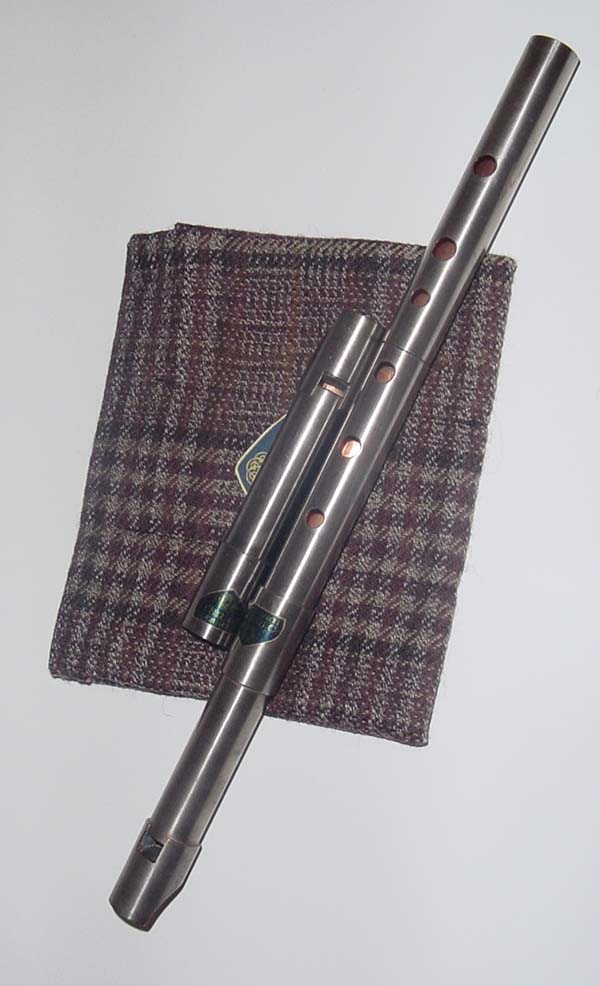
Here's the full whistle and the nice carrying case David sent with it.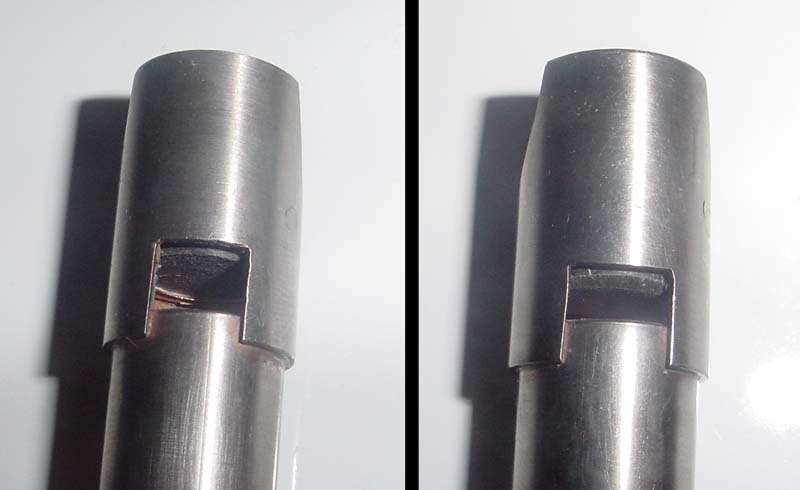
Here's a close-up of the two mouthpieces. The one on the left has the taller airway height.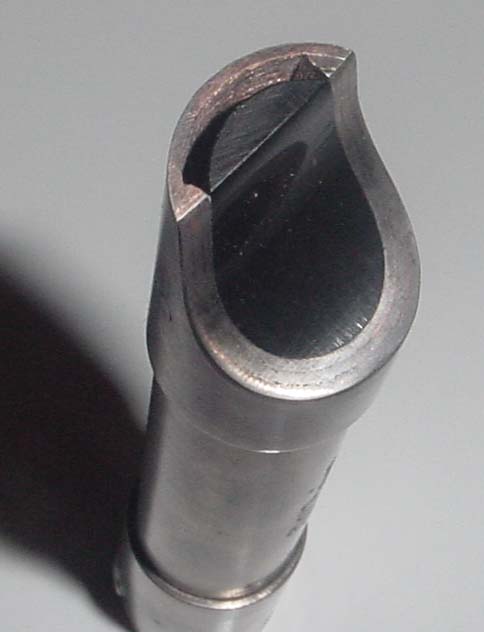
Here's another angle on the mouthpiece, showing the fipple area. This also gives a good showing of the taller airway height here. The other head's air passage was half this tall.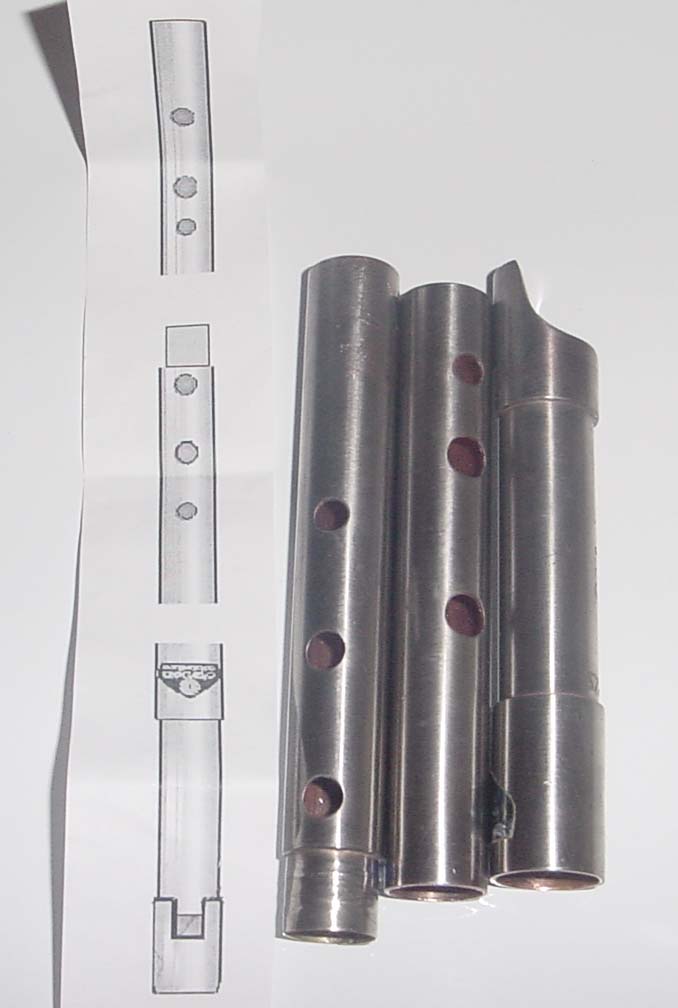
The rover, taken apart into it's three consituent pieces. David sends along an instruction sheet, too, just in case you're not sure how the pieces all go back together!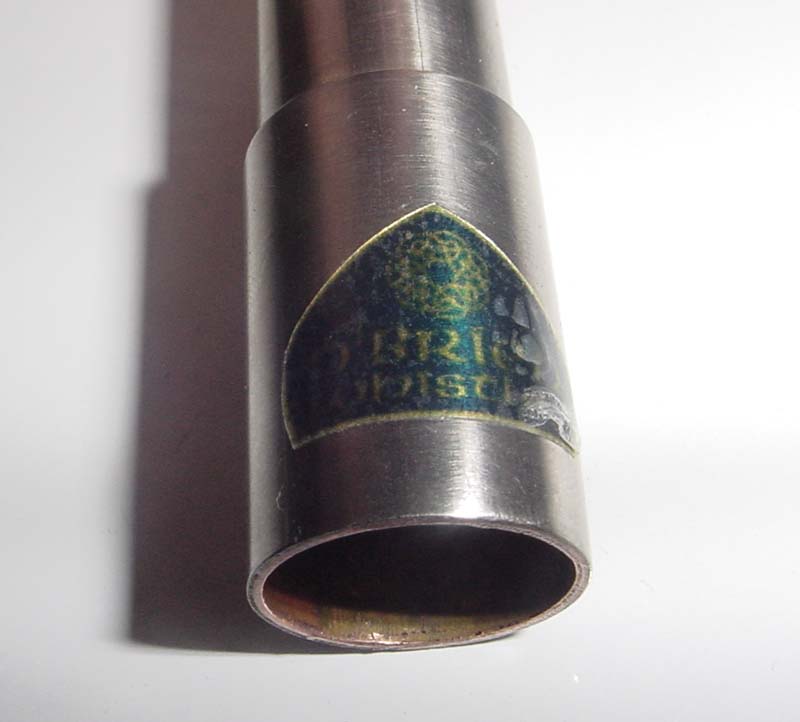
A shot at the O'Brien Whistles logo.
- Playing Characteristics
-
The shorter airway whistle had a bit of an interesting sound. I've heard it before in Laughing whistles. It's almost like some of the harsher overtones are just constrained from being voiced due to the narrower windway. It's a interesting, sweet sound. Unfortunately, the whistle had the same buzzing on the second octave A that the first one did. And by "buzz" I mean that "train whistle" sound that happens when the whistle can't decide if it wants to be in the first octave or the second. Usually, that's caused by being too timid with a whistle...but blowing steadily harder would eventually push this one into the third octave without resolving the buzz. Blowing softer really didn't seem to help either. I haven't figured out what causes it. It doesn't happen every time. Some days it happens a lot more than others. At different times, I've thought it might be temperature, breath control, or moisture, or playing angle, but I haven't been able to pin it down at all yet. In truth, this is the reason I've taken so long to review this whistle, trying to track down what causes it for sure, so that I could provide a work-around. Unfortunately, I was never able to definitively come up with a solution.
The higher windway whistle has a more open and traditional sound, and luckily, had no hint of buzzing. No start-of-note chiff at all, and very little in-note chiff, the tone is complex and easy on the ears.
-
Sound clips of the whistle:
That nasty buzz
Silver Spear
Hunter's House
Video clips of the whistle:
Blarney Pilgrim (recorded 2017 on a newer model in osage orange wood)Volume: Short airway: The first octave is about the same volume as a Sweetone, but the second octave is quite a bit louder. Higher airway: A bit louder than it's brother, this would be more at home at the busy session I play a
Responsiveness: For both heads, I had no problems playing crans, cuts, etc, at speed and without sounding muddled. Every bit as responsive as I would like.
Tuning: It's copper, so it really requires a good warm up. Also, probably a good idea to keep it under your arm, or down your shirt, or sit on it to keep it warm when you're not playing it at session, so you don't come back in flat. A very slight push on F# required, but that's normal for most whistles. Must drop breath considerably to bring B into tune, or it's around 20-25 cents sharp.
C-natural: OXXOOO is good, with a very slight reduction in breath.
Hole size and placement: Holes are moderately sized, well rounded, and centered down the whistle. They look much improved over the last time I reviewed an O'Brien.
Air volume requirements:
Short airway: Lower than average in the first octave. I can play two full reps of a jig at moderate pace, easy. But it goes up as you enter the 2nd octave and start having to push more breath through it.
Higher airway: A little more air is needed with this one. I found myself running out of air sooner, but it wasn't that big of a jump from the other one.Air pressure requirements:
Short airway: slightly below average in the first octave. Slightly above average in the 2nd octave, ramping up as you go up the scale...with the exception of that second octave A, of course.
Higher airway: Not that much more than the shorter one, really. Plays pretty easily and doesn't require too much agression in the second octave.Clogging: Copper whistles clog like nobody's business. This whistle definitely benefits from the Duponol treatment.
Wind Resistance: Negligible. I wasn't really able to play either of these whistles outside in the wind very much.
- Summary
- I would definitely recommend the higher airway O'Brien if you're in the market for one of these. The lower airway whistle sounds nice, though, and would be useful for tunes that stay below the second octave A, but that's really only a feasible option if the whistle is going to be part of a stable of whistles. I carry a number of whistles with me in a roll case when I'm out and about, and choose whistles based upon tunes I think they sound good with...in that kind of scenario, this whistle would have a place. But at session, where I tune up and hold onto one whistle all night, there's no way I could live with that buzz in the second octave A. I'd simply never pick up this short airway whistle in that environment, for fear of squawking really badly in the middle of a set. On the other hand, if you do happen to get a whistle with issues, David seems pretty quick to turn around and get a replacement out the door.